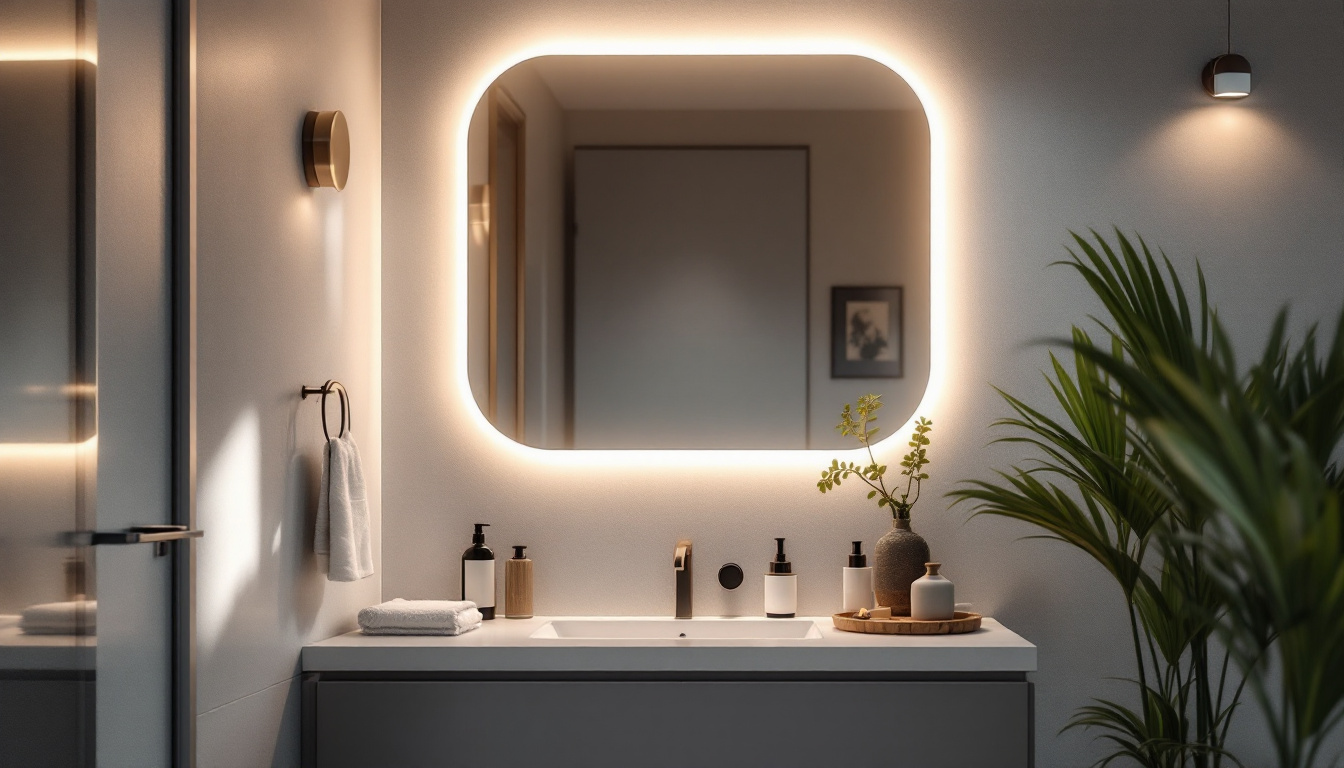
In recent years, the lighting industry has witnessed a significant shift towards energy-efficient solutions, with LED technology leading the charge. For lighting contractors, understanding the intricacies of LED replacement bulbs for fluorescent fixtures is crucial. This article delves into the best practices for selecting, installing, and maintaining LED replacement bulbs, tailored specifically for professionals in the field.
LED bulbs are not only more energy-efficient than their fluorescent counterparts, but they also offer a longer lifespan, reducing the frequency of replacements and maintenance costs. This longevity is particularly beneficial in commercial settings where lighting is used extensively. Moreover, LED technology has advanced to provide a range of color temperatures and brightness levels, allowing contractors to meet specific client needs and preferences. Understanding the differences between warm white, cool white, and daylight options can help professionals create the desired ambiance in various environments, from cozy restaurants to bright office spaces.
Furthermore, the installation process of LED replacement bulbs can vary depending on the type of fixture. Some LED bulbs are designed to be direct replacements, while others may require modifications to the existing fixture or the use of compatible ballasts. It is essential for contractors to familiarize themselves with the specific requirements of each product to ensure optimal performance and safety. Additionally, staying updated on local regulations and energy efficiency incentives can provide contractors with valuable insights that not only enhance their service offerings but also benefit their clients financially in the long run.
LED, or Light Emitting Diode, technology offers numerous advantages over traditional fluorescent lighting. These benefits include longer lifespan, reduced energy consumption, and lower heat output. However, to fully leverage these advantages, contractors must be well-versed in the technical aspects of LED bulbs.
LEDs operate differently than fluorescent lights. While fluorescent bulbs rely on gas and phosphor to produce light, LEDs generate light through electroluminescence. This fundamental difference leads to various performance characteristics, such as instant on/off capabilities and dimmability, depending on the specific LED model. Additionally, LEDs are highly durable, making them resistant to shock and vibrations, which is particularly advantageous in environments where traditional bulbs might fail more easily. This resilience contributes to their growing popularity in both residential and commercial applications, as users seek reliable lighting solutions that require less frequent replacement.
When selecting LED replacement bulbs, color temperature and Color Rendering Index (CRI) are critical factors. Color temperature, measured in Kelvin (K), influences the ambiance of a space. A lower Kelvin rating (2700K-3000K) produces a warm light, while a higher rating (4000K-5000K) yields a cooler, more daylight-like effect. Meanwhile, CRI indicates how accurately colors appear under a light source, with a higher CRI (above 80) being preferable for most applications. Understanding these metrics allows consumers to create the desired atmosphere in various settings, from cozy living rooms to vibrant commercial spaces. Furthermore, the advancement in tunable white LEDs offers even more versatility, enabling users to adjust the color temperature throughout the day to enhance productivity or relaxation, depending on their needs.
Choosing the right LED replacement bulb involves several considerations. Contractors should not only focus on the bulb’s specifications but also on the specific needs of the installation environment.
Before selecting LED replacement bulbs, it is essential to assess the compatibility with existing fluorescent fixtures. Many LED bulbs are designed to fit directly into fluorescent sockets, but some may require modifications or specific ballasts. Understanding the type of ballast in use can prevent installation issues and ensure optimal performance.
When replacing fluorescent bulbs with LEDs, evaluating lumens and wattage is vital. Lumens measure the amount of light emitted, while wattage indicates energy consumption. A common misconception is that higher wattage equates to brighter light. In reality, LEDs produce more lumens per watt than fluorescent bulbs. For example, a 15-watt LED may provide the same amount of light as a 40-watt fluorescent bulb, making it essential to compare lumens rather than wattage when making selections.
Many commercial and residential spaces benefit from dimmable lighting options. When selecting LED replacement bulbs, contractors should verify whether the bulbs are compatible with existing dimming systems. Not all LED bulbs are dimmable, and using a non-dimmable LED in a dimming circuit can lead to flickering or even damage to the bulb. Therefore, it is crucial to choose bulbs specifically labeled as dimmable when needed.
Proper installation is key to maximizing the performance and lifespan of LED replacement bulbs. Following best practices during the installation process can help avoid common pitfalls.
Before beginning any installation, safety should be the top priority. Ensure that power is turned off at the circuit breaker to prevent electrical shock. Additionally, using appropriate personal protective equipment (PPE) such as gloves and safety glasses can further enhance safety during the installation process.
When removing old fluorescent bulbs, it is important to handle them with care, as they can be fragile and may contain hazardous materials. Dispose of old bulbs according to local regulations to ensure environmental safety. If the fluorescent fixture uses a ballast, contractors should evaluate whether to replace or bypass it based on compatibility with the new LED bulbs.
Once the old bulbs are removed, installing the LED replacement bulbs is typically straightforward. Insert the LED bulbs into the existing sockets, ensuring a secure fit. If modifications are required, follow manufacturer instructions carefully to avoid damaging the fixture or the new bulbs. After installation, restore power and test the new lighting to ensure proper functionality.
Regular maintenance and troubleshooting are essential for ensuring the longevity and performance of LED replacement bulbs. Understanding common issues and their solutions can help contractors provide better service to their clients.
While LEDs are known for their durability, regular inspections can help identify potential issues before they become significant problems. Dust and debris can accumulate on bulbs and fixtures, reducing light output. Contractors should recommend periodic cleaning of fixtures and bulbs to maintain optimal performance.
Flickering lights can be a common issue with LED bulbs, often caused by incompatible dimmers or electrical fluctuations. If flickering occurs, contractors should first check the compatibility of the dimmer switch and the LED bulbs. If the dimmer is not compatible, replacing it with an LED-compatible model can resolve the issue. Additionally, ensuring a stable power supply can help mitigate flickering problems.
Color shift can occur in LED bulbs over time, leading to a noticeable change in light quality. This issue is often due to heat exposure or poor-quality components. Contractors should advise clients on the importance of selecting high-quality LED products with good thermal management features to minimize the risk of color shift. If color shift occurs, replacing the affected bulbs may be necessary.
One of the most compelling reasons to switch from fluorescent to LED lighting is the potential for significant energy savings. Understanding the financial implications can help contractors make a strong case for LED replacements to their clients.
To calculate energy savings, contractors can compare the wattage of existing fluorescent bulbs with the wattage of the new LED replacements. For instance, if a facility currently uses 40-watt fluorescent bulbs and switches to 15-watt LED bulbs, the energy savings per bulb is 25 watts. Multiplying this by the number of bulbs and the hours of operation can yield substantial annual savings.
While the initial investment in LED replacement bulbs may be higher than traditional fluorescent options, the long-term cost benefits are undeniable. LEDs have a lifespan of up to 25,000 hours or more, significantly reducing replacement frequency and maintenance costs. Additionally, the energy savings contribute to a lower overall operational cost, making LEDs a financially sound choice for both residential and commercial applications.
LED replacement bulbs can be utilized in a variety of settings, offering versatile solutions for different lighting needs.
In commercial environments, LED replacement bulbs are ideal for office spaces, retail stores, and warehouses. Their energy efficiency and long lifespan make them a popular choice for businesses looking to reduce operating costs while maintaining high-quality lighting. Additionally, the ability to choose different color temperatures allows for tailored lighting solutions that enhance the shopping experience or improve employee productivity.
Homeowners are increasingly turning to LED replacement bulbs for their versatility and energy savings. From living rooms to kitchens, LEDs provide ample lighting while contributing to lower energy bills. Furthermore, the wide range of styles and designs available allows homeowners to select bulbs that complement their decor.
LED replacement bulbs are also suitable for outdoor lighting applications, including streetlights, landscape lighting, and security lighting. Their durability and resistance to harsh weather conditions make them an excellent choice for outdoor settings. Moreover, the energy savings associated with LED technology can significantly reduce municipal lighting costs.
As the lighting industry continues to evolve, understanding LED replacement bulbs for fluorescent fixtures is essential for lighting contractors. By following best practices in selection, installation, and maintenance, contractors can ensure optimal performance and satisfaction for their clients. The transition from fluorescent to LED lighting not only offers energy efficiency and cost savings but also enhances the quality of light in various applications. Embracing LED technology is not just a trend; it is a commitment to providing better lighting solutions for the future.
Ready to elevate your lighting game and pass on the savings to your clients? Look no further than LumenWholesale for all your LED replacement needs. Our extensive selection of top-quality, spec-grade lighting products is available at unbeatable wholesale prices, ensuring you get the best value for every project. Say goodbye to local distributor markups and hello to hassle-free bulk buying with free shipping. Don’t compromise on quality or price. Click now to Wholesale Lighting at the Best Value and make the smart switch to reliable, high-performance lighting with LumenWholesale.

Discover the innovative strategies lighting contractors use to maximize efficiency and performance with 4 ft fluorescent light bulbs.

Discover innovative strategies to future-proof your bathroom lighting projects with our comprehensive guide on vanity lights.

Discover why lighting contractors should prioritize the most efficient LED strips in their projects.

Discover the importance of the electrical snake tool for lighting contractors—boost efficiency, safety, and accuracy in wiring projects.